Blog Post
Forced abortion, sterilization, and family breakup are among Canada’s worst crimes against First Nations peoples
By Jonathon Van Maren
Earlier this month, the Globe and Mail drew attention to a little-known but brutal part of Canada’s past: The eugenics-inspired attempts to abort First Nations babies and sterilize indigenous women. In some cases, indigenous women were even told that if they aborted the baby in their womb, they would increase their chances of getting their other children back from the foster care system. Although no journalist will actually say it, this is yet another example of the violence of abortion being used as a tool of oppression—the story of how abortion was used to rob indigenous women of their pre-born children:
Morningstar Mercredi says she woke up from surgery at 14 and immediately broke down when she discovered the baby she had felt inside her was gone. What remained was an incision from her panty line to her belly button, cut without her permission.
She would eventually learn her left ovary and a Fallopian tube had been removed, too – an experience that “irrevocably” changed her life…Ms. Mercredi is among a growing number of Indigenous women insisting on action to address the ongoing practice of coerced sterilization – the subject of discussions in Geneva this week at the UN Committee Against Torture.
Representatives from Canada were asked on Wednesday what the government is doing about it. The delegation is to respond Thursday. The prevalence of the practice today has not been documented but Assembly of First Nations National Chief Perry Bellegarde, Senator Yvonne Boyer and the federal NDP are calling for investigations of recent reports from Indigenous women in Canada.
“We need to raise our voices,” Ms. Mercredi said. “We need to do whatever we have to do to hold those people that are responsible accountable if we want this to stop.”
In the mid-1970s, Ms. Mercredi said, she endured a rape in Fort McMurray, south of her community of Fort Chipewyan, Alberta, and was pregnant. Resisting pressure in Fort Chipewyan to have an abortion, armed with a bus ticket and a few dollars, she headed to Saskatoon for refuge. “I wanted to be somewhere else in order to have this baby,” she said.
Wearing worn-out old running shoes one day, she slipped on ice and started spotting, so she went to an emergency room. Ms. Mercredi said she asked what was happening prior to surgery, only to be dismissed.
“I wanted to know how my baby was and what was going on with me,” she said. “The doctor performed surgery on me and when I awoke, I had no baby and what the doctor told me – I don’t know why but I will never forget this – he said, ‘Your chances of getting pregnant will be less than that of the average woman.’”
What happened to her, without an explanation or consent from her or her parents, had devastating consequences. Ms. Mercredi tried to take her own life six months after the procedure in Saskatoon and struggled with alcoholism and drug addiction for about five years as a young woman. She’s been sober now for 32 years.
“Absolutely the substance abuse was linked to my suicidal depression and the trauma of that event,” she said. “I went on from – my life from that point on making choices that were shame-based.”
Ms. Mercredi said she can’t imagine how many other Indigenous women have gone through similar experiences. Some did not survive them. Pam, who does not want to use her last name for fear of further harming her family, said her daughter did not. She died by suicide 10 months after a tubal ligation at a Winnipeg hospital in 2009.
Pam said her daughter believed having the procedure would result in getting her other children back, out of foster care.
“I guess I can say she was bullied to death,” Pam said. She’s obtained medical records to learn more about the circumstances surrounding the procedure and the involvement of child-welfare workers.
There could have been a different outcome for Pam’s daughter, said Cora Morgan, a family advocate with the Assembly of Manitoba Chiefs.
People who’ve allowed these procedures, or carried them out, must be held accountable, and future instances prevented, she said. Ms. Morgan said she’s heard several stories from Indigenous women who also say they were encouraged to abort pregnancies because they had other children in foster care.
“Their social worker is giving them instructions to abort their baby in exchange for being able to get their children back or get more access to their children,” Ms. Morgan said. “They’re basically blackmailing women into having abortions.”
Ms. Morgan believes more Indigenous women would come forward to share their stories if they had a formal outlet, a place to tell them. For her part, Ms. Mercredi said she repressed her own story for four decades until she heard a radio broadcast featuring women from the Saskatoon Health Region who said they had been coerced into sterilizations.
About 60 women have now joined a proposed class action lawsuit led by Maurice Law, an Indigenous-owned national law firm, that lists the government of Saskatchewan, the Saskatoon Health Authority, the federal government and medical professionals as defendants in its statement of claim.
Alisa Lombard, an associate with the firm, said that since The Canadian Press published a story about the issue last week, her practice has heard from more than 32 women who also say they were sterilized without their consent.
“I think that it is troubling that everyone would not be as concerned as some of us are and committed to making sure that vulnerable women, at their most vulnerable, wouldn’t have the very basic, standard protection that most people take for granted,” Ms. Lombard said Wednesday.
Most Canadians remain unaware of the fact that Canadian governments implemented and perpetrated eugenic polices well into the 20th century. As I noted in Chapter 6 of my 2016 book The Culture War:
The province of Alberta’s 1928 Sexual Sterilization Act was intended to reduce the number of undesirable humans, and thus created a Eugenics Board to assist in this endeavor. Similar legislation passed in British Columbia in 1933.These boards possessed an appalling power, and were even permitted to make sterilization contingent for release from a mental institution. Nearly 3,000 sterilizations were carried out, and the Alberta Eugenics Board remained in place until Peter Lougheed’s Progressive Conservative government abolished it in 1972. British Columbia’s legislation was repealed in 1973. A postscript to Canada’s entanglement with social Darwinism came in 1996, when an Alberta court awarded Leilani Muir nearly one million dollars for “wrongful sterilization.” She had been sterilized against her will in 1959.
The Muir story is particularly horrifying, as she was sterilized after scoring low on an IQ test at the Calgary Guidance Clinic. This diagnosis was the grounds used by the Eugenics Board for her forced sterilization (her Catholic background and Irish-Polish heritage were also contributing factors.) Without her knowledge, doctors performed a bilateral salpingectomy on Muir, telling her that the surgery was actually to remove her appendix. It would be nearly a decade before Muir would discover why she could not have children. Now it appears that Muir’s case may not actually be the post-script to this story, as more indigenous women come forward with their own awful stories.
It is interesting to note that while the primacy of the family is under attack by progressive governments across the country—governments like that of Rachel Notley’s NDP insist that their sexual policies for schools are intended to protect children from their backwards and even “cruel” parents—it was government attacks on First Nations families that wrought so much havoc and destruction in aboriginal communities to begin with. When the state decides that it is primarily responsible for children—over and above parents—the stage has been set for terrible things to take place. The government of Alberta, in defending their policies with the same logic once utilized by those who supported the residential schools, is making the same mistakes that other Canadian governments made not so long ago.
Back when I was in university, I toured an abandoned residential school with some fellow students and our instructor Gwen Point, the wife of then-Lieutenant General of British Columbia Steven Point. The elderly man leading the tour had been a student there. I can vividly remember the chilling feeling of hearing his account of the physical and sexual abuse that took place there while standing in moist, dark tunnel beneath the ground floor—a tunnel where problematic children would be locked away as punishment. His gravelly voice was heavy with the pain he and his fellow inmates at the school had experienced after being torn from their families by a government that thought it knew better than their parents what they should be taught and which culture they should adopt. Attempts to cover up the abuse at residential schools often added horror to horror: Indigenous girls who became pregnant as a result of sexual assault were sometimes forced into secret abortions, increasing their trauma.
The lessons of history should be crystal clear. Sadly, many of these lessons are not simply being forgotten—they are being ignored.
________________________________________________________
For anyone interested, my book on The Culture War, which analyzes the journey our culture has taken from the way it was to the way it is and examines the Sexual Revolution, hook-up culture, the rise of the porn plague, abortion, commodity culture, euthanasia, and the gay rights movement, is available for sale here.


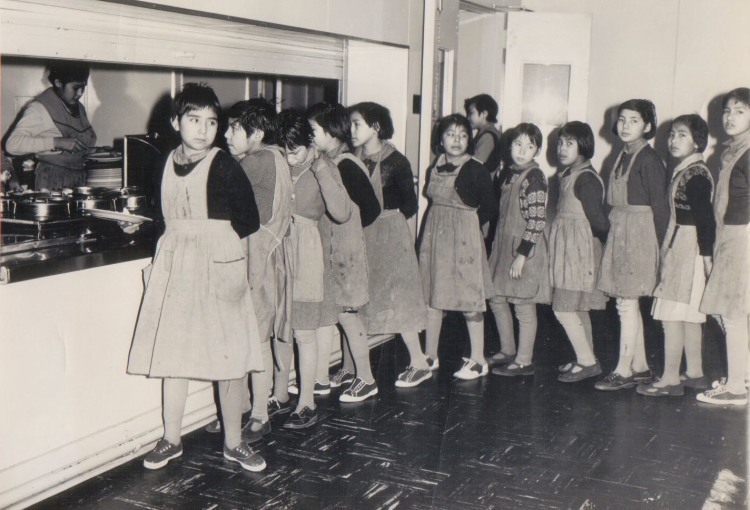
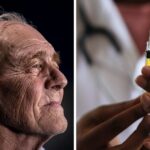
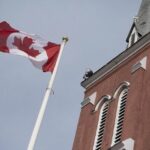
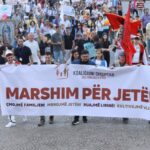

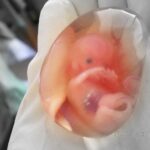

Not simply forgotten or ignored. It’s much worse than that. These atrocities are being suppressed, but these bullying politicians of today will be held accountable, if not sooner then certainly later. Also for the crimes being committed against those of faith as we are both seeing and experiencing today. They will not go unpunished.
My God!
The history of humanity is so scary… and inhumane!
May God help us to be His instruments combating the plague of evil.
In 1970s British Columbia’s politicians forced doctors to experiment on twins in heart experiments using secret proceedings and threats of child abduction by the crown. They picking twins. The disabled twin in particular, used racism, bigotry, and eugenic laws to strip what little rights the twins had away. Its for society…they must provide a cure or else. Trial by ordeal comes to mind. One legendary doctor protested the government had no ethics at all. Under their ideas, he should be able to experiment on them! The evil politicians, back by thugs with guns, directed the doctors to kill the patient and dissect them. Try to revive them now and if unsuccessful steal – harvest the organs without consent and give to research labs like Dr. Mengele did in 1943-45. War on humans. Canada’s exploitation of kids by the creepy crown of Canada.
cool